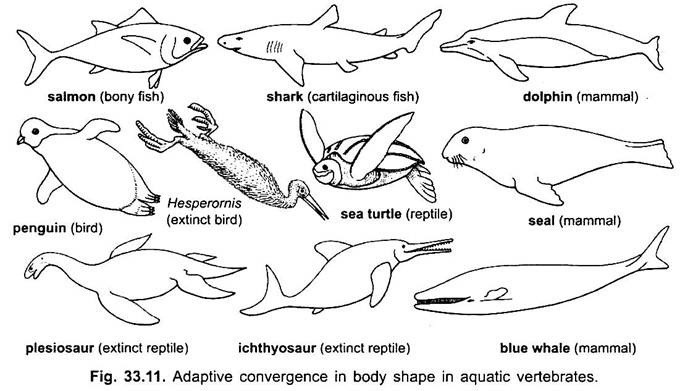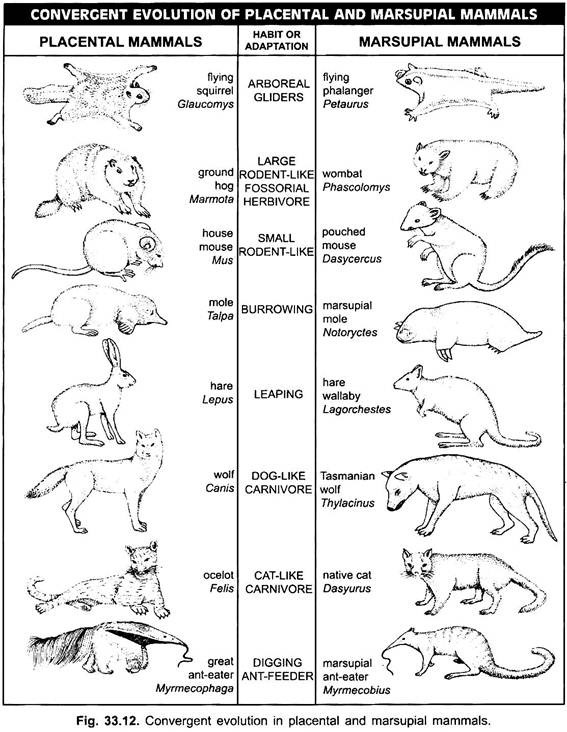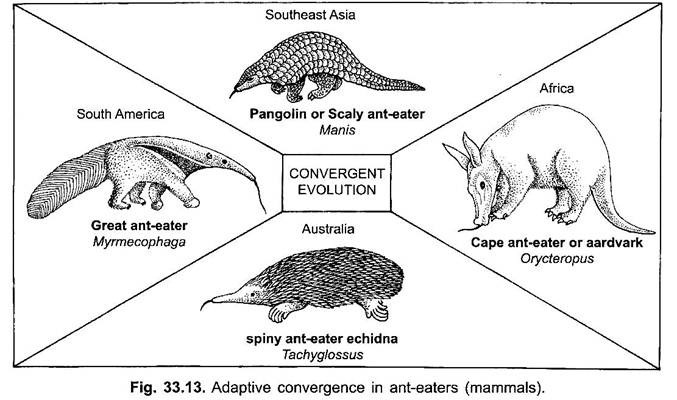Distantly related animals inhabiting similar habitats often develop independently similar morphological features that make them look similar. This phenomenon is termed adaptive convergence or convergent evolution which is the opposite adaptive radiation.
Following examples may be cited of adaptive convergence (Fig. 33.11):
1. Aquatic Vertebrates:
Figure 33.11 shows various aquatic vertebrates, not closely related showing a marked adaptive convergence (streamlined fish-like body, limbs paddle-like digits webbed) due to living in the same environment. Their ancestors were probably much less similar, but Natural selection has favoured in them to develop similar characteristics which fit them for life in water.
2. Placental and Marsupial Mammals:
ADVERTISEMENTS:
During Palaeocene, Eocene and Oligocene, the marsupials in Australia and the placentals in the rest of the world passed through much adaptive radiation. They moved into habitats vacated due to extinction of dinosaurs. Marsupials and placental mammals are not closely related, but convergent evolution has resulted in similar looking members in both the groups occupying similar ecological niches and leading similar ways of life.
Thus, there are native or marsupial wolves, mice, cats, ant-eaters, moles, sloths, flying phalangers and wombats. These are not related to their true counterparts in placental mammals but resemble them due to convergent evolution (Fig. 33.12).
3. Ant-Eaters:
ADVERTISEMENTS:
Ant-eaters belong to different orders of class Mammalia (Fig. 33.13) not closely related. They have evolved from different non-ant-eating ancestors independently acquiring similar features or adaptations for a diet of ants, termites and other smaller insects Thus all ant-eaters possess much reduced teeth or teeth are entirely absent, elongate snout, long extensible sticky tongue and sharp stout claws on front legs for digging into termite mounds, rotten legs, etc.


